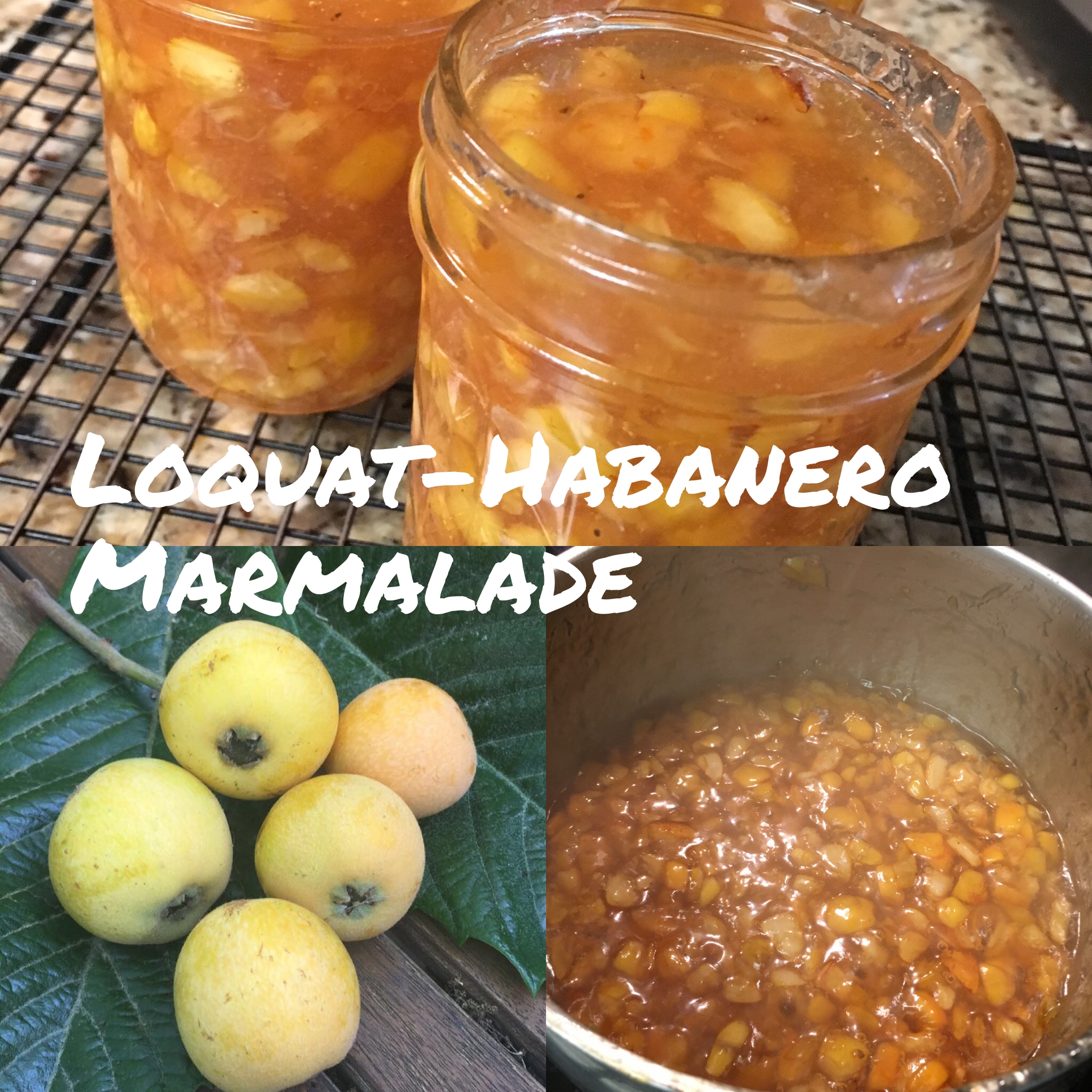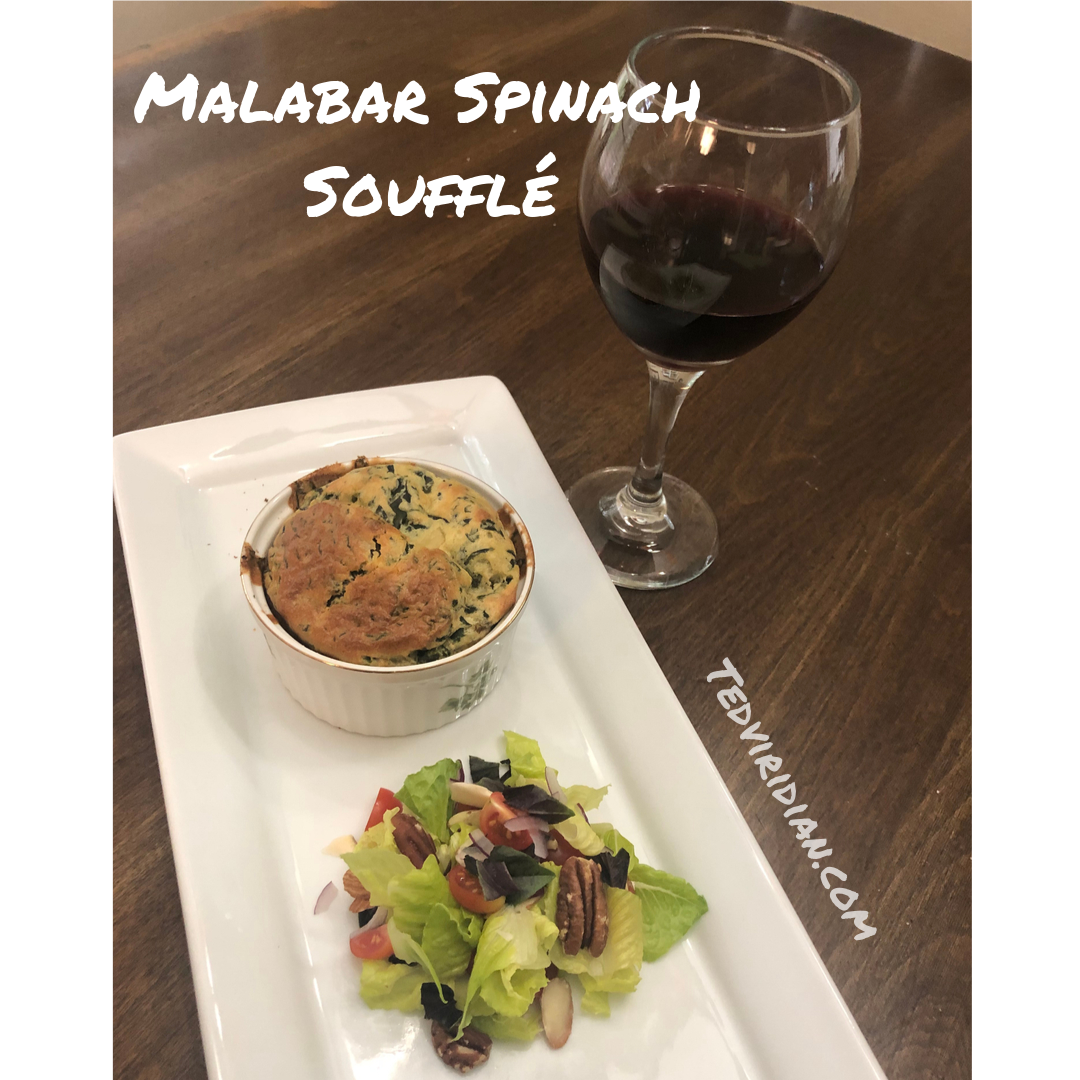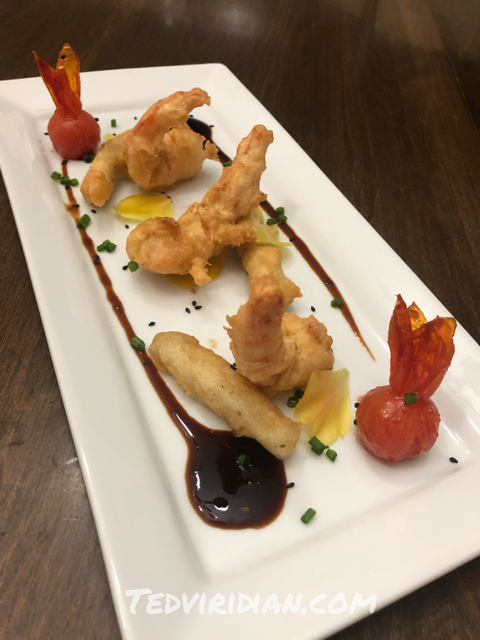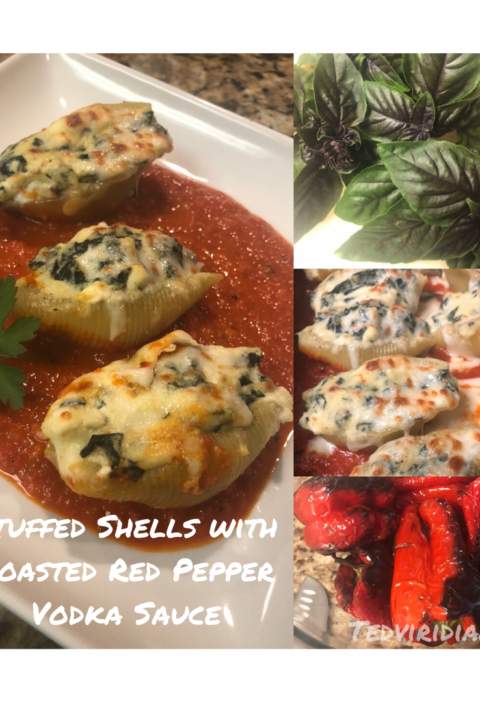
I’m a big fan of chile peppers in general, but habaneros have a special place in my heart (or… stomach?) Anyway, they’re probably my favorite chile, and I especially love them when used in a spicy/sweet combination. Habaneros have a distinctly fruity, floral taste that makes them the perfect pepper for sweet applications, like pairing with chocolate, making fruit-based salsas, and of course, jellies and preserves.
If you’ve never made jelly before, don’t be scared. It really is super easy. Jelly holds its shape due to a special carbohydrate molecule called pectin. Pectin is in a family of molecules called “heteropolysaccharides”; try saying that three times fast! Pectin is naturally found in many fruits, like apples (especially tart ones), citrus, guavas, berries, and yes even loquats. In the old days of jelly making, fruit preserves were made using only the pectin found naturally in the fruit. Getting this natural pectin to gel took a lot of time and a lot of cooking.
Luckily, in 2019 we can cheat. In the grocery store you can find powdered or liquid pectin, which saves quite a bit of time and effort. I used powdered for this recipe.
Let’s get to the recipe.
The first thing that you want to do is mince your habanero. A good strategy is to use food safe gloves for this part. Capsaicin, the chemical that gives peppers their heat, can stay on your hands for quite a while. If you’re not careful and touch your eyes or… ahem, worse, you could be in for a good deal of misery.
Cut your habanero in half and remove the seeds and the white membrane inside. Then slice it into thin strips (these are called fine julienne if you ask the French) and then into teeny tiny little squares (turning your fine julienne into a fine brunoise [broohn-wah]) You don’t have to be too anal retentive about the dimensions of your cuts; I wasn’t. (Technically a fine brunoise should be 1/16th of an inch cubes.) The main goal here is to not have big chunks of chile in your jelly. That’s no bueno.
By the way, I started out with just one habanero, but you can use more depending on how much you like heat. Using just one gives this jelly a slight, subtle kick — I wouldn’t call it spicy.

Now, prepare your loquats. You can read my article on how to do that here.
Once you have your loquats halved and seeded, go ahead and chop them up. You’re going to need three cups worth. you can chop them as big or small as you like, depending on your preference. I left the skins on; they give this jelly a texture similar to orange marmalade.

Work as fast as you can! Loquats start to turn brown as soon as you expose them to air. Toss them with one tablespoon of lemon juice.

Okay, now you can pour your loquats and their juice into a pot with your habanero. Turn up the heat to medium high, stirring occasionally.

While everything is cooking you can stir in an (optional) pat of butter.
Now, gradually stir in 3 tablespoons of pectin. The way I do it is to rain the pectin evenly over the surface, one tablespoon at a time.
Bring your mixture to a rapid boil, and then stir in 2 1/2 cups of granulated sugar. Bring back to a hard boil for about a minute.

At this point, I just ladled the hot jelly into clean jars, and let them cool on the counter for about half an hour before putting them in the fridge. They’ll keep for about three weeks this way. Jam doesn’t expand very much when it freezes, so you can also freeze it in sturdy glass jars or plastic containers.

I don’t claim to know very much about canning, but at this point you could also can the preserves using a hot water bath method, according to the manufacturer’s instructions. If you do decide to can your jars, make sure you know what you’re doing.
So that’s it for marmalade! We’re coming to the end of loquat season, so I’ll do one or two more recipes and move on to a new plant. Thanks for reading!




